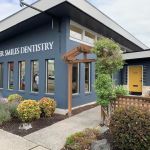- 1-Understanding-Gum-Disease-and-Its-Causes
- 2-Importance-of-Proper-Brushing-for-Gum-Health
- 3-Correct-Techniques-for-Brushing-to-Prevent-Gum-Disease
- 4-Common-Mistakes-That-Increase-Gum-Disease-Risk
- 5-Additional-Oral-Care-Habits-to-Support-Gum-Health
- 6-Real-Life-Examples-of-Successful-Gum-Disease-Prevention
- 7-Professional-Advice-and-Resources-for-Gum-Health
1. Understanding Gum Disease and Its Causes
Gum disease, also known as periodontal disease, is a common oral health problem that can lead to serious consequences if untreated. It starts with plaque buildup along the gumline, which, if not properly removed, hardens into tartar and causes inflammation. This inflammation can progress to gum recession, bone loss, and ultimately tooth loss.
Understanding the causes of gum disease is essential in preventing it. Poor oral hygiene, smoking, certain medical conditions like diabetes, and genetic predispositions all increase the risk. However, one of the most controllable factors is proper brushing technique, which plays a pivotal role in maintaining gum health.
2. Importance of Proper Brushing for Gum Health
Proper brushing is the frontline defense in preventing gum disease. It effectively removes plaque, bacteria, and food particles that accumulate in the mouth throughout the day. Brushing with the right technique ensures that areas prone to plaque buildup, especially along the gumline, are thoroughly cleaned without damaging the delicate gum tissue.
Studies have shown that individuals who brush correctly have significantly lower rates of gum inflammation and bleeding. This highlights why learning how to prevent gum disease with proper brushing is so vital for long-term oral health.
3. Correct Techniques for Brushing to Prevent Gum Disease
Mastering proper brushing techniques involves several key steps:
- Use a soft-bristled toothbrush: To protect gums from irritation while effectively cleaning teeth.
- Angle the brush at 45 degrees: Aim the bristles toward the gumline to dislodge plaque beneath the gums.
- Use gentle, circular motions: Avoid aggressive scrubbing which can damage gum tissue.
- Brush all surfaces: Including outer, inner, and chewing surfaces of teeth for comprehensive cleaning.
- Brush for at least two minutes twice daily: Consistency is key to plaque control.
Following these steps regularly can dramatically reduce the risk of gum disease and maintain a healthy smile.
4. Common Mistakes That Increase Gum Disease Risk
Many people unknowingly adopt habits that contribute to gum problems. Common mistakes include using a hard-bristled toothbrush, brushing too aggressively, neglecting the gumline, and brushing too quickly. These errors can cause gum recession, sensitivity, and inadequate plaque removal.
Another frequent oversight is not replacing toothbrushes regularly. Old brushes harbor bacteria and lose effectiveness. It’s recommended to replace toothbrushes every three months or sooner if bristles are frayed.
5. Additional Oral Care Habits to Support Gum Health
Besides proper brushing, other habits enhance gum disease prevention:
- Floss daily: Removes plaque between teeth where brushes can’t reach.
- Use antimicrobial mouthwash: Reduces bacteria and freshens breath.
- Maintain a balanced diet: Nutrients like vitamin C support gum tissue repair.
- Avoid tobacco products: Smoking increases gum disease risk dramatically.
- Regular dental check-ups: Professional cleanings remove tartar and allow early detection.
Combining these habits with proper brushing creates a comprehensive defense against gum disease.
6. Real-Life Examples of Successful Gum Disease Prevention
Consider John, a 45-year-old who struggled with gum bleeding and bad breath. After consulting his dentist and learning proper brushing techniques along with regular flossing, John saw significant improvements in his gum health within months. His story underscores the power of education and consistent care.
Similarly, studies have demonstrated that patients who adopt professional brushing guidance experience reduced gum inflammation and a lower incidence of periodontal disease, reinforcing the importance of technique in oral hygiene.
7. Professional Advice and Resources for Gum Health
For anyone interested in mastering how to prevent gum disease with proper brushing, consulting dental professionals is invaluable. Dentists can provide personalized advice, demonstrate correct techniques, and recommend products suited to individual needs.
For further information and to explore the best oral care products and services, visit Dentistry Toothtruth. This trusted resource offers expert recommendations to help maintain healthy gums and overall oral wellbeing.







 Sumner Smiles Dentistry4.0 (79 review)
Sumner Smiles Dentistry4.0 (79 review) Smarteeth Dental4.0 (25 review)
Smarteeth Dental4.0 (25 review) Kentuckiana Oral Maxillofacial & Dental Implant Surgery4.0 (196 review)
Kentuckiana Oral Maxillofacial & Dental Implant Surgery4.0 (196 review) Smile Works Dentistry & Orthodontics in La Mirada4.0 (53 review)
Smile Works Dentistry & Orthodontics in La Mirada4.0 (53 review) ADVANCED SMILES PC4.0 (205 review)
ADVANCED SMILES PC4.0 (205 review) Nuttall Smiles4.0 (424 review)
Nuttall Smiles4.0 (424 review) The Importance of Oral Health Education During Pregnancy for a Healthy Pregnancy
The Importance of Oral Health Education During Pregnancy for a Healthy Pregnancy Best Tips for Brushing Your Teeth Properly for Healthy Gums: Essential Techniques for Oral Health
Best Tips for Brushing Your Teeth Properly for Healthy Gums: Essential Techniques for Oral Health Why Skipping Dental Checkups Can Lead to Bigger Oral Health Problems
Why Skipping Dental Checkups Can Lead to Bigger Oral Health Problems Advantages of Porcelain Dental Restorations
Advantages of Porcelain Dental Restorations How Can Diabetes Cause Tooth and Gum Problems? Preventing and Managing Oral Health Issues
How Can Diabetes Cause Tooth and Gum Problems? Preventing and Managing Oral Health Issues Healthy Habits for Promoting Good Oral Health and Hygiene: Tips for a Healthy Smile
Healthy Habits for Promoting Good Oral Health and Hygiene: Tips for a Healthy Smile